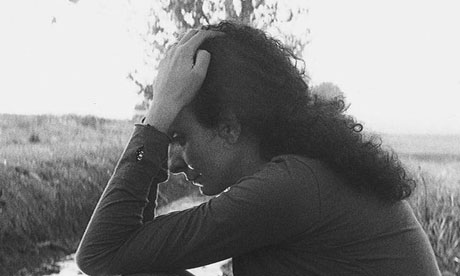
The Spanish director Jaime Rosales is one of the most interesting and valuable film-makers at this year's Cannes. He's a director who first came to notice here with his deeply disturbing 2003 film The Hours of the Day, and then his Solitary Fragments, about the Madrid bombings, in 2007, a movie that sadly never found its way to the UK. His work has become steadily more experimental and demanding. Bullet in the Head, in 2008, was a mysterious, almost wordless movie in which the characters were filmed from afar, as if under surveillance. Now The Dream and the Silence arrives in Cannes, and in many ways it is his most difficult, and yet rewarding film: a work that lingers in the mind.
Rosales sure doesn't make things easy for his audience. The Dream and the Silence is shot in a grainy black-and-white, apart from two moments filmed in colour. The reason? That is elusive. A succession of scenes are filmed largely from fixed camera positions, a fly-on-the-wall set-up which records the speech and actions of non-professional performers who sometimes wander out of shot.
It is the story of a Spanish family: a construction engineer who is married to a teacher of French; they have two daughters. A terrible accident – though one which is never shown on screen, and never wholly explained – causes a tragedy, although the irony is that the father now suffers from memory loss, so that he cannot fully feel the anguish and grief he should be going through. The film's procedure intuits his numbness to some degree, but partly operates as a kind of alienation effect. There is an extraordinary moment in which the grieving woman is shown speaking to someone off-camera about the toys of her childhood. When we realise what's been happening in that scene, the effect is very powerful; were it not for Rosales's distancing methods, that power would perhaps have been diminished.
Jaime Rosales is a film-maker to be compared with Lucrecia Martel, particularly her film The Headless Woman, which has the same opaque, mysterious and yet realist quality. Yet it is utterly distinctive. The Dream and the Silence is the work of someone with enormous intelligence and a need to see the world afresh.

